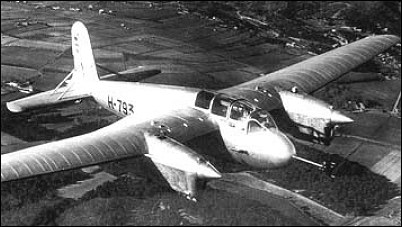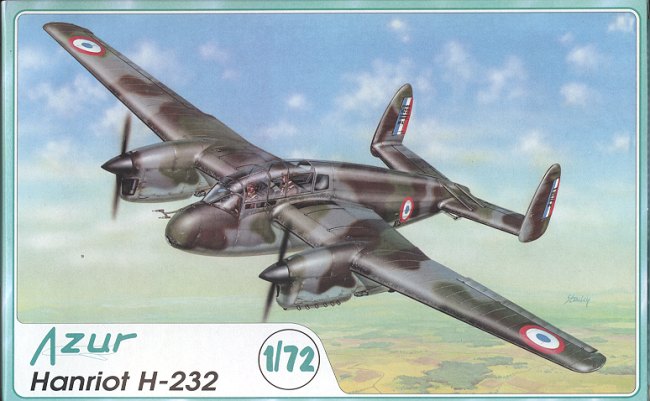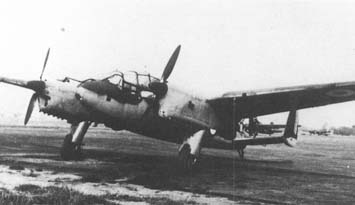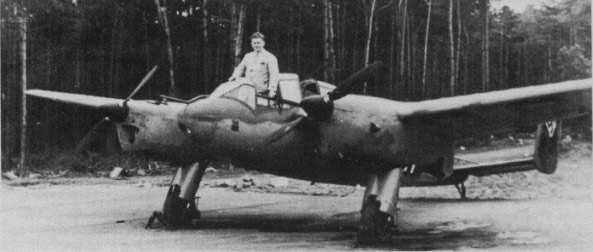Prototyyppi lensi ensi kerran 22. heinäkuuta 1937. Koneen valmistaja oli kansallistettu S.N.C.A.C.-tehdas.

Kone on keskitaso, siinä on kokometallirakenne kangasverhoilulla.
Koneessa oli kaksi Renault'n valmistamaa 220 hevosvoiman rivimoottoria.
Koneeseen tuli sisäänvedettävä laskuteline vasta prototyyppikokeiden jälkeen.

Spesifikaatio
Moottorit: Kaksi164 kW (220 hp) Renault 6Q-02/03, moottoria.
Erikoinen piirre oli propellien pyöriminen vastakkaisiin suuntiin, toisiinsa nähden.
Kärkiväli: 12,76 m
Pituus: 8,55 m
Korkeus: 3,44 m
Siipipinta-ala: 21,2 m
Tyhjäpaino: 1655 kg
Lentopaino: 2187 kg
Huippunopeus: 335 km/h
Lakikorkeus: 7500 km
Kantama: 1000 km
Käyttö Suomessa:
Kolmannen valtakunnan käsiin jäi 22 Hanriot H.232-konetta, joista Suomi tilasi 19. heinäkuuta 1940 kolme kappaletta.
Yksi koneista tuhoutui siirtolennon alkuvaiheen aikana Saksassa.
Toinen Suomeen tulleista koneista vaurioitu 1942 kun sillä oli lennetty 146 tuntia. Sitä tuotu enää käyttöön. Toinen oli käytössä 15 helmikuuta 1945 asti ja sillä lennettiin 290 tuntia. Molemmat koneet poistettiin ilmavoimien rekisteristä 2. tammikuuta 1950.
Koneiden arvo kaksimoottori koneiden koulutus työssä jäi paljon toivottua
vähäisemmäksi, toisen Henriot 232 koneen vaurioiduttua elokuussa 1942.
-------------------------------------------------------
Hanriot H.230 was a French twin-engined advanced trainer. The construction of the aircraft was initiated in 1936 by Hanriot's chief designer Montlaur. The aircraft was produced by the nationalized factory SNCAC.

The prototype H.230.01, made its first flight in June 1937. The aircraft resembled its predecessor, the H.220 fighter-bomber, but had a lightened and simplified structure.
The H.230.01 was powered by two 128 kW (172 hp) Salmson 6Af engines and its configuration included a short crew canopy faired into the upper decking of the rear fuselage and a conventional strut-braced tail unit, and the fixed main landing gear units incorporated spatted wheel fairings. During further tests it was decided to introduce considerable dihedral at the wingtips to improve stability, but the H.231.01 which followed in May 1938 had dihedral increased over the whole wing span, and the unusual wingtip arrangement of the modified H.230 was eliminated.

Twin fins and rudders were introduced and the power was increased with new 172 kW (230 hp) Salmson 6Af-02 engines. The Hanriot H.232.01 had a single fin and rudder and was equipped with twin 164 kW (220 hp) Renault 6Q-02/03, (left and right hand propeller rotation), engines plus retractable landing gear. The H.232.02, which made its maiden flight in August 1938, introduced a redesigned cockpit. The aircraft was tested between October 1938 and May 1939. The type was then given a twin fin and rudder tail assembly and was flown in this new configuration in December 1939, then redesignated H.232/2.01.

The French Air Ministry made an initial order of 40 H.232.2's. This order was though soon was extended to 57. The French Air Force started to receive their H-232.2's in February, 1940, and received a total of 35 before the defeat against the Germans in June 1940. The Germans captured 22 aircraft of this type, and since they did not have any use of them, Finland placed an order for three aircraft from the Germans.
One was destroyed in an accident during the ferry flight to Finland, the two other saw service as advanced trainers in the Finnish Air Force and were written off on January 2, 1950. During the Winter War the French had planned to send 25 aircraft of this type to Finland. The German aircraft were scrapped in 1942.
Ei kommentteja:
Lähetä kommentti
Kaikenlaiset kommentit ovat tervetulleita.